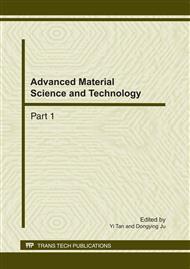p.983
p.987
p.991
p.995
p.999
p.1003
p.1007
p.1011
p.1015
Sheet Material Property Effects upon Dynamic Behavior in Self-Pierce Riveted Joints
Abstract:
Self-pierce riveting (SPR) technology offers an alternative to resistance spot welding (RSW) for joining sheet materials. It has been found that the SPR technology produced a much stronger joint than the RSW in fatigue test. For efficient design of SPR structures, the knowledge of dynamic characteristics of the SPR beams is essential. In this paper, the free transverse vibration characteristics of single lap-jointed cantilevered SPR beams are investigated in detail. The focus of the analysis is to reveal the influence on the natural frequency and natural frequency ratio of these beams caused by variations in the material properties of sheet materials to be jointed. It is shown that the transverse natural frequencies of single lap jointed cantilevered SPR beams increase significantly as the Young’s modulus of the sheet materials increases, but change slightly corresponding to the change in Poisson’s ratio. It is also found that the material density of the sheets have significant effects on the free transverse vibration characteristics of the beams.
Info:
Periodical:
Pages:
999-1002
Citation:
Online since:
February 2011
Authors:
Price:
Сopyright:
© 2011 Trans Tech Publications Ltd. All Rights Reserved
Share:
Citation:


